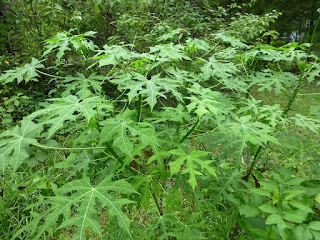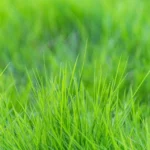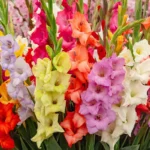
Chaya, also known as spinach tree, is bushy plant that belongs to the spurge family. It is native to Central America (Yucatan peninsula). It has been introduced to Puerto Rico and Hawaii, where it grows in abundance today. Chaya prefers hot, humid coastal areas, but it can easily survive in dry and arid areas, exposed to full sun or in the partial shade. It is resistant to various insects and diseases, but it is susceptible to frost and strong winds. People cultivate chaya as a source of food and in the ornamental purposes.
One serving of Chaya has the same amount protein as an egg.
Chaya grows in the form of shrub or small tree that can reach 10 feet in height and 6.5 feet in width.
Chaya has more calcium than any other vegetable.
Chaya has succulent stem filled with milky sap that leaks from the stem after injury.
Chaya has two times the iron as spinach.
Chaya has three to five-lobed leaves with toothed edges. They are dark green colored, equipped with long petioles and alternately arranged on the branches.
The leaves have a bland taste so they can be easily added to many foods such as soups, mixed
vegetable dishes and omelets without changing the taste of these dishes.
Chaya produces white flowers arranged in branched clusters. Each flower contains either male or female reproductive organs.
Stir frying Chaya leaves with onions, garlic and chili peppers is another way to make an easy, nutritious
dish.
Chaya blooms from spring to autumn.
Raw Chaya leaves contain hydrocyanic glucoside, a toxic substance that can make you sick.
Fruit of chaya is three-sided capsule covered with stinging hairs.
When you boil Chaya leaves, much of the vitamin C ends up in the cooking water.
Chaya rarely produces fruit and seed and it mostly propagates via stem cuttings.
Chaya is very easy to grow. It is propagated from stem cuttings, not seeds.
Scientific name of chaya: “Cnidoscolus”, means “a thorn that sting a little”. Name refers to the sharp hairs that can be found on the stem and leaves of some wild varieties of chaya (leaves of commercial varieties are smooth).
Most people prune Chaya to a height of 1.5-2m to make it easy to harvest leaves.
Chaya is an excellent source of proteins, vitamins A, C and vitamins of the B group and minerals such as calcium and iron.
Chaya is a drought-resistant plant, even in sandy soils.
Nutritional value of chaya is much greater than nutritional value of spinach and Chinese cabbage. Leaves of chaya are better source of vitamin C than orange.
Chaya is resistant to most insects and plant diseases although it can be affected by bugs, broad mites, spider mites and aphids and it is a host of CCMV(Cassava Common Mosaic Virus).
Leaves of chaya contain toxic substance – cyanide and they need to be cooked before consumption (15 minutes of cooking destroys toxin). Pots made of enamel, steel and clay can be used for cooking, while aluminum pots should be avoided to prevent creation of toxic substance that induces diarrhea in humans.
Compost made with pruned Chaya branches will be high in nitrogen and can be used to fertilize vegetable gardens.
Chaya is often used for the preparation of lasagnas, pizzas, tortillas or dishes made of rice, beans and eggs. Large leaves are used for wrapping of food. Small quantities of raw chaya are not harmful for humans. Drink made of raw, blended leaves of chaya mixed with pineapple and orange juice is often consumed in Mexico.
Dried or fresh Chaya leaves and branches make good fodder for chickens, and help to increase egg production.
Dried chaya is often used as food for pigs, chickens and turkey and as a fish meal.
Growing Chaya at health centers is a good way to teach people about the nutrition benefits of using
Chaya in family meals.
Chaya has numerous beneficial properties. It can improve circulation, digestion and function of eyes and brain. Chaya can also decrease blood cholesterol level, keep arthritis and diabetes under control and prevent anemia.
Continuous harvesting of tender shoots and young leaves will help maintain the plant at a convenient height.
Chaya is perennial plant (life span: more than 2 years).









